
Introduction
Jewellery as a medium of artistic expression, referred to as author jewellery in Germany, has triggered a young movement in Asia. The interpretation of j e w elle r y from this contemporary perspective is primarily anchored in western thought. In this respect the concept of ALIEN Art Centre in Kaohsiung, Taiwan, to open a platform for this genre of the modern arts as part of its broader agenda is a globally oriented, ambitious intention.
In Europe this new perspective of Jewellery has been developing since the 1960s. In doing so the conceptual sphere already inherent in the non-utilitarian nature of the medium was first and foremost utilized to free jewellery from the constraints of valuable, so-called precious jewellery materials. In a u t h o r jewellery today the consensus is to use materials independently of monetary value, which favour strength of expression. Equally one of the basic principles of the author’s self-image is that form and freedom of intention as well as means of language should be understood as an artistic medium, a basic condition of art. The artistic intention is decisive for the form as well as for the space which jewellery addresses. Decisive to the way it is received is its appearance or the emotion it creates. A subtext of the artistic concept is the relationship to the body, which unfolds in interaction with the wearer and contributes independently of the format.
Franz Bette has been considering matters of design and critically examining the composition of jewellery, especially its conceptual and artistic formulation, for over 50 years. To this day, teaching and a great readiness to share his experience, disclose artistic processes and pass them on belong to his work. Apart from creating his own pieces, it is of great importance to him to convey artistic possibilities in the fields of general design, product design and jewellery. Because of this interest and expectation, teaching engagements such as Kilkenny, Ireland; Düsseldorf and Hanau, Germany; Melbourne and Canberra in Australia; Hong Kong, and more recently Taipei and Tainan, Taiwan, prove moreover the worldwide esteem for his abilities.
Today, when all parts of the world appear to be within easy reach through the possibilities of media communications, and art is considered to be so international, it seems appropriate to pause in order to give more attention to the different cultural roots from which artistic processes arise, especially to acknowledge the specific differences in thinking. Bette’s teaching engagements in Asia have opened the way to a number of authentic experiences, which in their diversity go beyond the “global” encounter from afar. His interest in the students allowed him to discover the special talents inherent in their culture and, in doing so, time and time again to note how different the perspectives are.
Work in Progress
Born in the middle of Germany, Franz Bette is a European artist; his thinking and his work are anchored in European culture. 1 For the exhibition in ALIEN Art Centre and for the new audience in Taiwan, he has developed a body of work which internalises his experiences in Asia. For this he allows new elements to intervene in his artistic approach. His western-influenced vocabulary of metal - steel, silver or gold, in form of wire, sheet or mesh; and plastic, as surface or form, partly coloured, partly painted, has been expanded by materials with Asian connotations, such as porcelain, paper, bamboo, wood and textile. He works with these materials aware of the tradition and meaning anchored in the Asian culture; however, in examining and appropriating them, Franz Bette goes his own way according to his purpose or his intuition. Regardless of traditional working processes, his cultural influences, perceptions and feelings take the lead, bringing about a new repertoire orientated on jewellery but which also explores the possibilities of spacial objects.
The Cord
During this process a central element crystallises which runs through this new complex of work like a common thread. As a medium it draws all the various materials together: it is the cord. Neither as thin as a sewing thread nor as thick as a rope, it is the first and foremost a type of cord made from spun fibres woven together and later a cord of paper. In a technical sense Bette puts this element to use as a flexible connector.
In this way Franz Bette continues the process of developments, which applies to his unmistakeable working method and whole oeuvre. An elementary principle and central theme of his work is loosely connected elements. This principle has been proved in its flexibility and its conceptual transference, especially in the context of this exhibition project but also as a type of link between the cultures. The essential basis of Bette’s creations is visibility of structure and movement, which are always realised in new, playful variations. Seen in this way, works from earlier creative phases can always be newly interpreted and further developed again and again.
In this body of work, the cord appears in addition to or instead of steel wire, which in Franz Bette’s conception is usually used as a constructive element. From the creative aspect this element appeals to Bette because of the ductus of the line, the potential of its graphic qualities and associations with script as symbol or as shadow. This role is taken over by the cord. Compared to the cord the fine steel wire conveys apart from differences between hard and soft, clearly defined and textured - a subliminal aggression, a topic which has its place in the expressive scope of western contemporary jewellery and has also been the subject of an exhibition. 2 In as much as this subject also touches limits in western sensibilities, it is nevertheless legitimate in the context of an artistic intention. However, in Asian culture aggressive expression is banned from its gastronomy, and in contrast to western dining culture, one’s personal knife is not allowed at the table. As a consequence, meat is served cut into bite-sized pieces, and chopsticks are used as eating tools. In this culture the spiked end of the wire crosses the boundary of sensibilities. Within these opposites of awareness, which describe cultural difference, Franz Bette discovers the cord.
In doing so he seemingly coincidentally picks up on an old tradition deeply anchored in Chinese culture, which ascribes special meaning to the cord. As an art form associated with extravagantly tied knots and bows, which could transport good luck messages, the cord was an element of jewellery for courtly society. Valuable things such as jade or other stones, which would be set in metal or worn on a chain as jewellery in the western world, were tied on a cord and held by fanciful knots to be worn as jewellery or amulets in the Asian region. The luck-bringing attributes were intensified by the colour red, which according to the Chinese Five Elements teaching brings luck by setting all things and elements in the cosmos into relationship. Even today the use of a red cord continues during festivals and daily life.
In a free adaptation of the cord as a theme and from his own point of view, Franz Bette initially uses the material’s expressive qualities, the lifelike structure of the cord through its graphic path and the possibility to express something floating or sketch-like. In long free swings the cord connects empty space with a surface, which may be transparent plastic or painted porcelain. He uses short pieces of cord like hatching, arranged like loose bundles of strokes. At the same time they interlock at one end, joining above and below not only in reality but symbolically as well. These components generate compositions which might be perspectival study drawings or spatial sketches examining the subject of the space around the brooches, but they also set fantastic objects before our eyes which might as well be studies for large-scale installations.
Form – Colour – Symbol
Franz Bette likes to work with forms whose simplicity assists his constructive working method and provides space to carry out his artistic intentions. The Möbius band, the cross, the circle or the spiral - forms with high symbolic value, belong to the formal canon of his work.3 Until now colour appears in his expressive repertoire primarily in an abstract sense, in the colour spectrum of metals, plastic, and of precious stones. In his new compositions he tests colour playfully as a painter on porcelain or bamboo surfaces. Basically, however, his colour play is an expansion around the monochrome cord, which quite naturally takes over the role of colour transporter. Natural colours accompany white, skeletal forms. Bundles of cord segments in blue and green, or white and yellow embody spatial hatching. The main role, however, is played by the red cord, freely sweeping and an open continuation, or like a visible spinal cord within a transparent backbone.
Colour and form carry meanings in all cultures. Their respective metaphorical meaning is present as an undercurrent whose relevance depends on the particular perspective of the viewer. In addition to the previous symbolic forms in Franz Bette’s work, it is appealing to discover these newly chosen elements and materials - bamboo, porcelain and the cord - with a view to Asian culture. They interact with each other and open the way for new perceptions as well as levels of symbolic meaning as exemplified by the steel wire and the cord. The role of colour also comes to be newly seen. The central role of the colour red, especially taken on by the cord, intensifies the cultural shift between east and west. Red, the bringer of luck, is also laden with meaning in western culture, where it is primarily a dominator. Red is the colour of royalty, also because of the rarity and value of the pigment. Common to all people is the fundamental association with red as the colour of blood.
Conclusion
Franz Bette threw himself into this exhibition project with empathy and playful enthusiasm; full of excitement for new experiences, he began a new, open-ended process. From the beginning he could not let go of the idea of overcoming the technoid hardness of metal, especially steel, to convert it into lightness. With his flexible connection, his plastic and later wire compositions with semi-transparent mesh, he found convincing answers to this challenge time and time again. Now in examining porcelain, bamboo, wood, paper and cord, he searches for ways to shift the boundaries further towards the dissolution of everything definite. Their catalytic effect was hardly predictable. Many new impulses have led Franz Bette to special formulations of his poetic language. What has occurred is organic fleetingness instead of the expected geometric constructions. With the potential of a drawing, the cord with its loops and small knots and its long protruding ends can continue into open space. The thinness of the line finds its counterpart in the fragility of the porcelain. Like broken pieces or fragments, these pieces seem to be part of a greater whole. These fragile compositions of great allure, physical and optical lightness evoke care in the handling. In the usual format of brooches and pins, they shift between drawing and sculpture, far removed from all monumentality. Their restrained delicacy and frankness is their strength.
Brooch, mild steel wire, paper cord, 2018, 7x7x1cm by Franz Bette ©ALIEN ART
Object, plywood, string, mild steel wire 2010, 8x5x2.5cm by Franz Bette ©ALIEN ART
Ring, stainless steel, gold, 3x3cm; Deutsches Goldschmiedehaus, Hanau, Germany by Franz Bette ©ALIEN ART
Brooch, plywood, paint, 2012, 16x5x4cm. Rineg, stainlss steel, garnet, 2002, 2x4x1cm; Museum Angewandte Kunst, Frankfurt am Main, Germany by Franz Bette ©ALIEN ART©ALIEN ART
Object, ply wood, paint, paper cord Objekt, Schichtholz, Farbe, Papierschnur 2018, 5x4x2cm by Franz Bette ©ALIEN ART
Brooch, porcelain, paper cord, 2018, 11x11x3.5cm by Franz Bette ©ALIEN ART
Ring, Stainless steel, 2002, 2x4x1cm by Franz Bette ©ALIEN ART
Object, mild steel wire, cord, parchment, 2012, 23x6x6cm ©ALIEN ARTby Franz Bette ©ALIEN ART
Ring, stainless steel, fine gold, 1983, 3x10cm; Schmuckmuseum Pforzheim, Germany by Franz Bette ©ALIEN ART
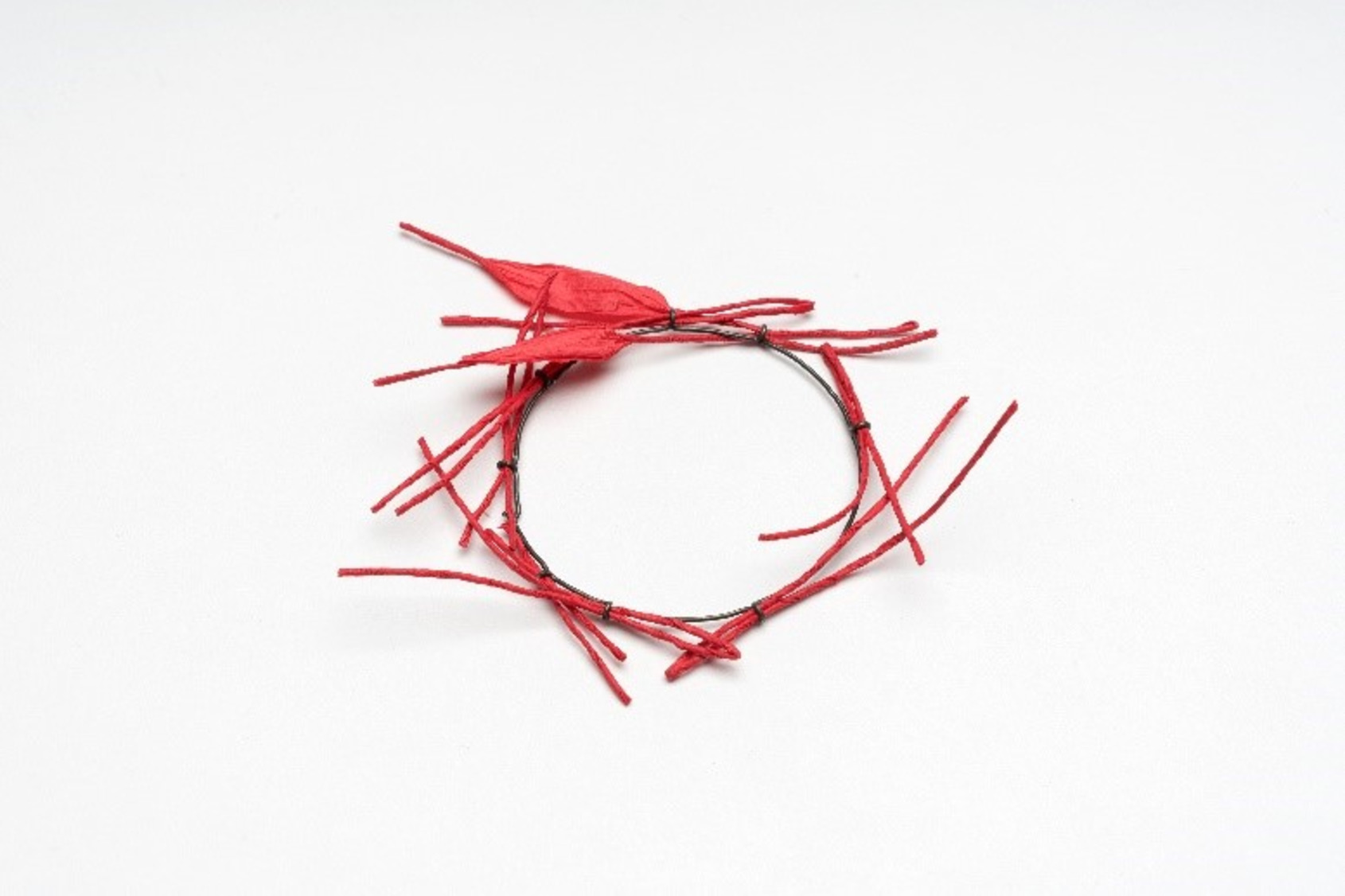
Brooch, mild steel wire, paper cord, 2018, 7x7x1cm by Franz Bette ©ALIEN ART
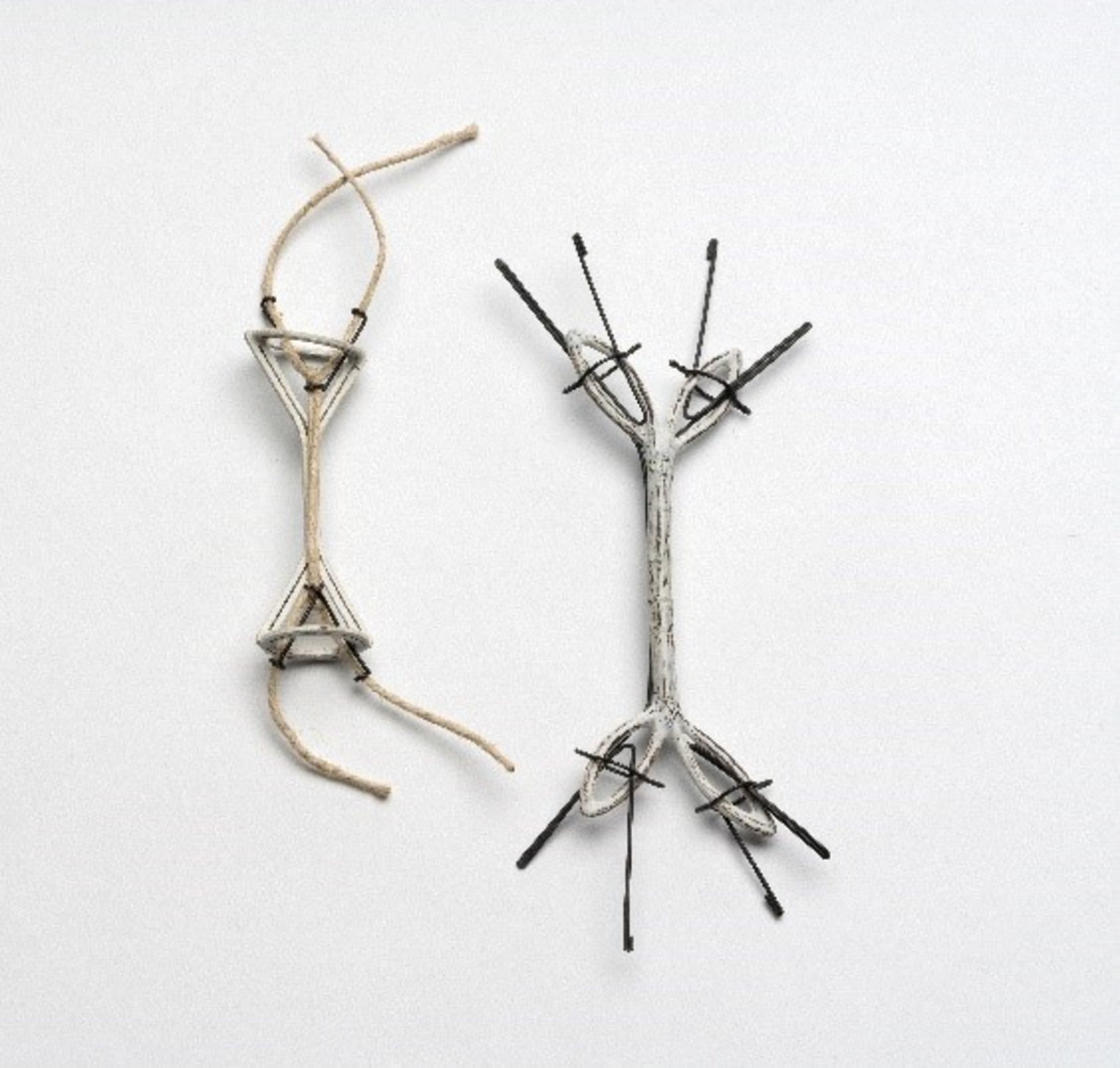
Object, plywood, string, mild steel wire 2010, 8x5x2.5cm by Franz Bette ©ALIEN ART
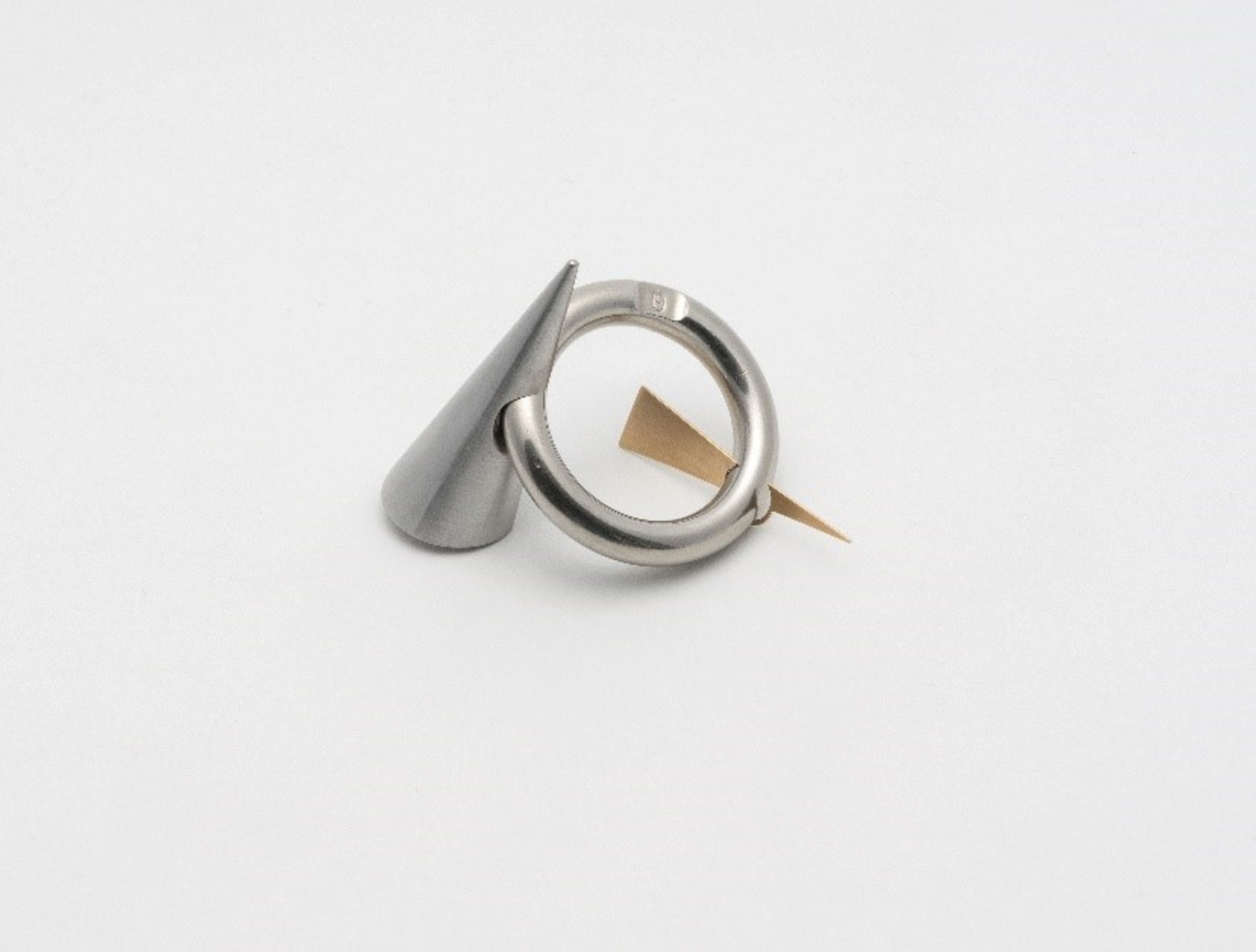
Ring, stainless steel, gold, 3x3cm; Deutsches Goldschmiedehaus, Hanau, Germany by Franz Bette ©ALIEN ART
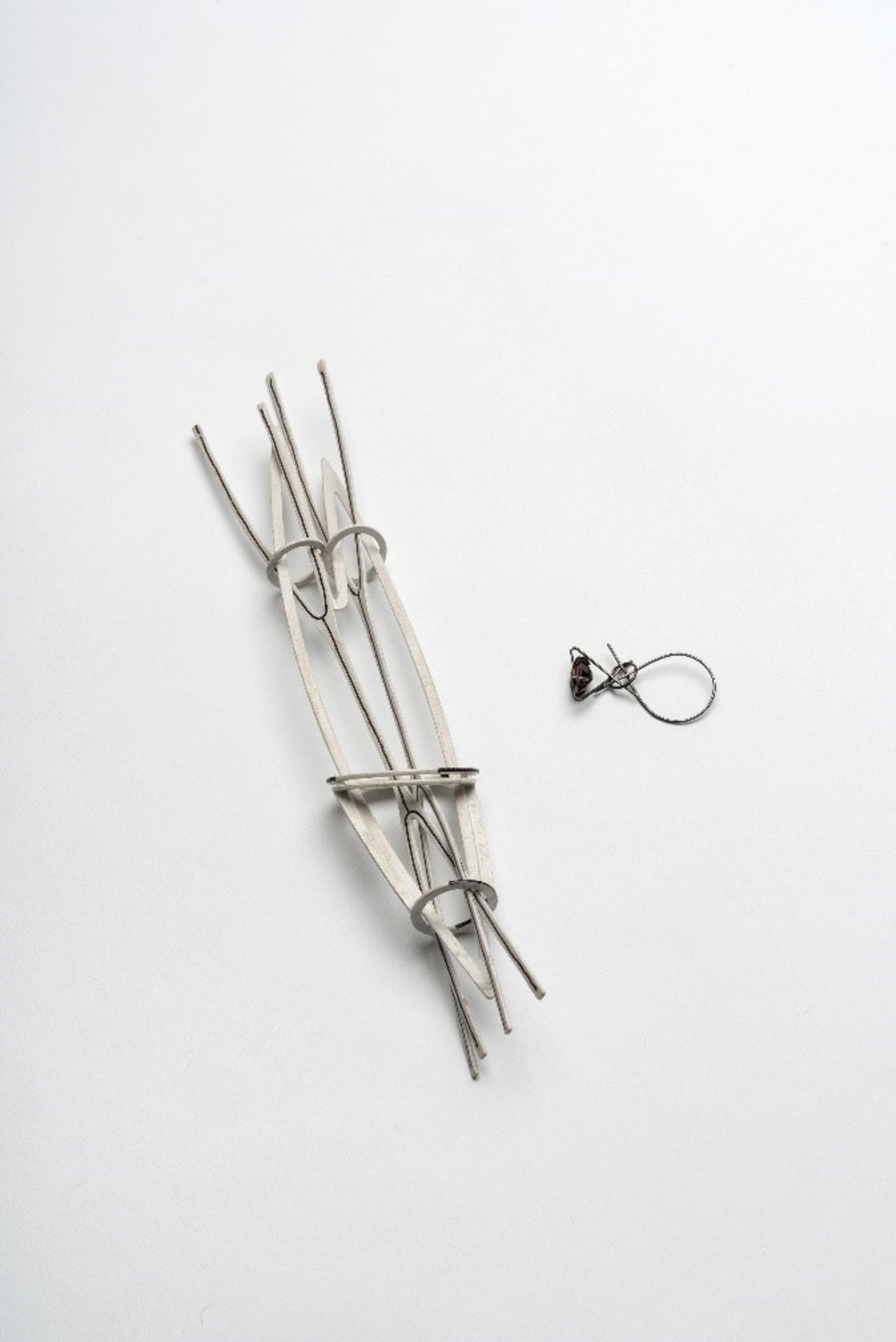
Brooch, plywood, paint, 2012, 16x5x4cm. Rineg, stainlss steel, garnet, 2002, 2x4x1cm; Museum Angewandte Kunst, Frankfurt am Main, Germany by Franz Bette ©ALIEN ART©ALIEN ART
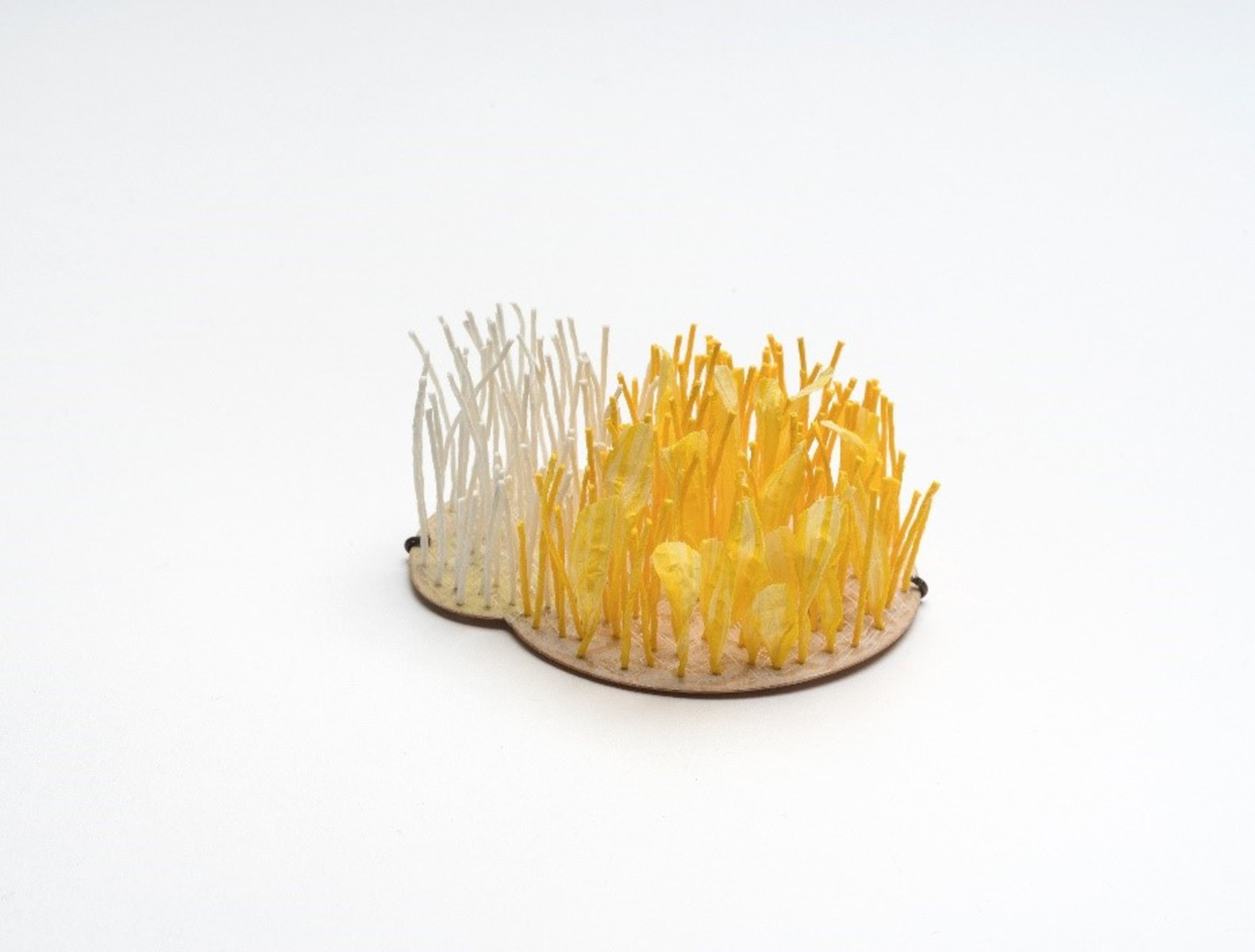
Object, ply wood, paint, paper cord Objekt, Schichtholz, Farbe, Papierschnur 2018, 5x4x2cm by Franz Bette ©ALIEN ART
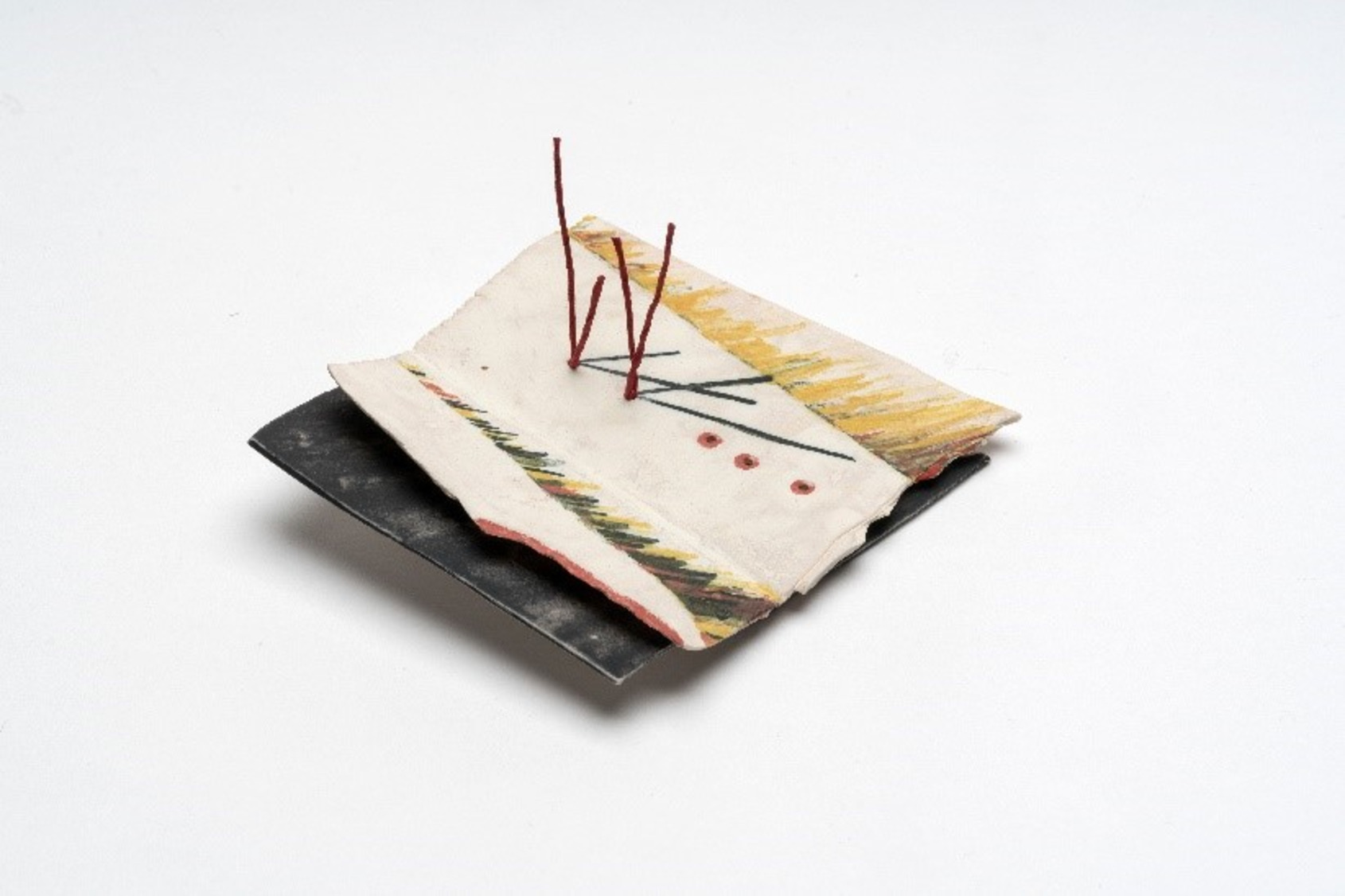
Brooch, porcelain, paper cord, 2018, 11x11x3.5cm by Franz Bette ©ALIEN ART
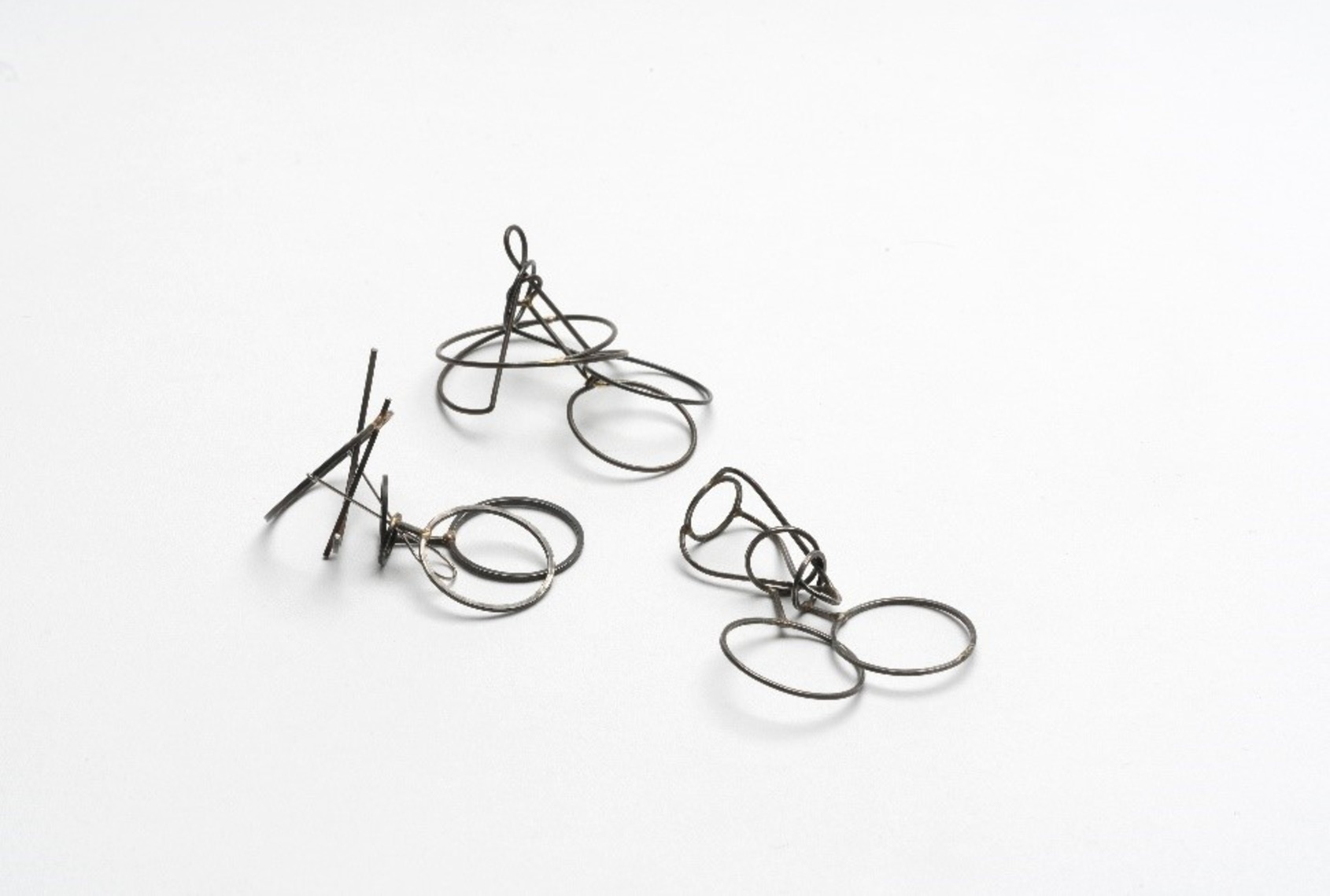
Ring, Stainless steel, 2002, 2x4x1cm by Franz Bette ©ALIEN ART
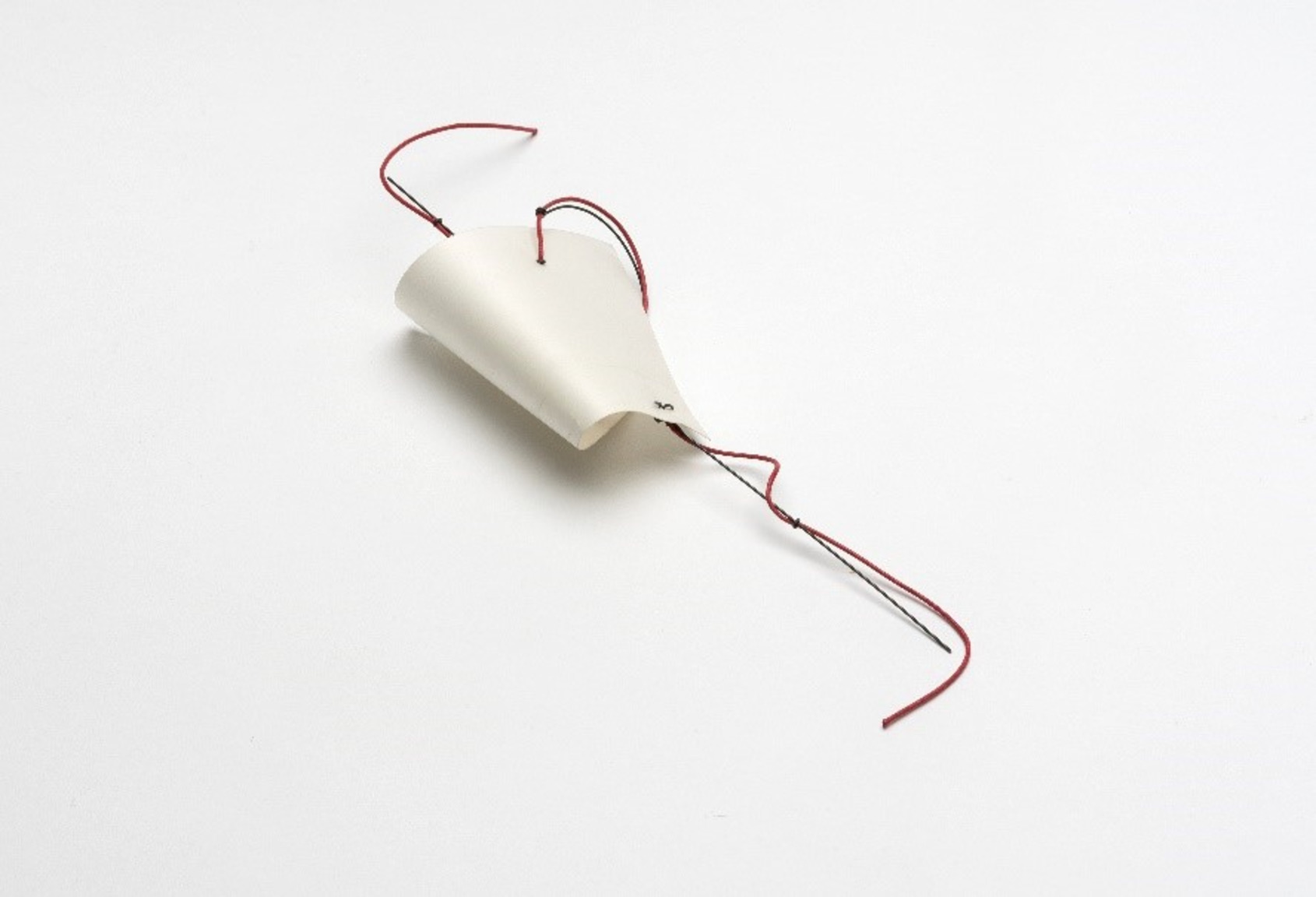
Object, mild steel wire, cord, parchment, 2012, 23x6x6cm ©ALIEN ARTby Franz Bette ©ALIEN ART
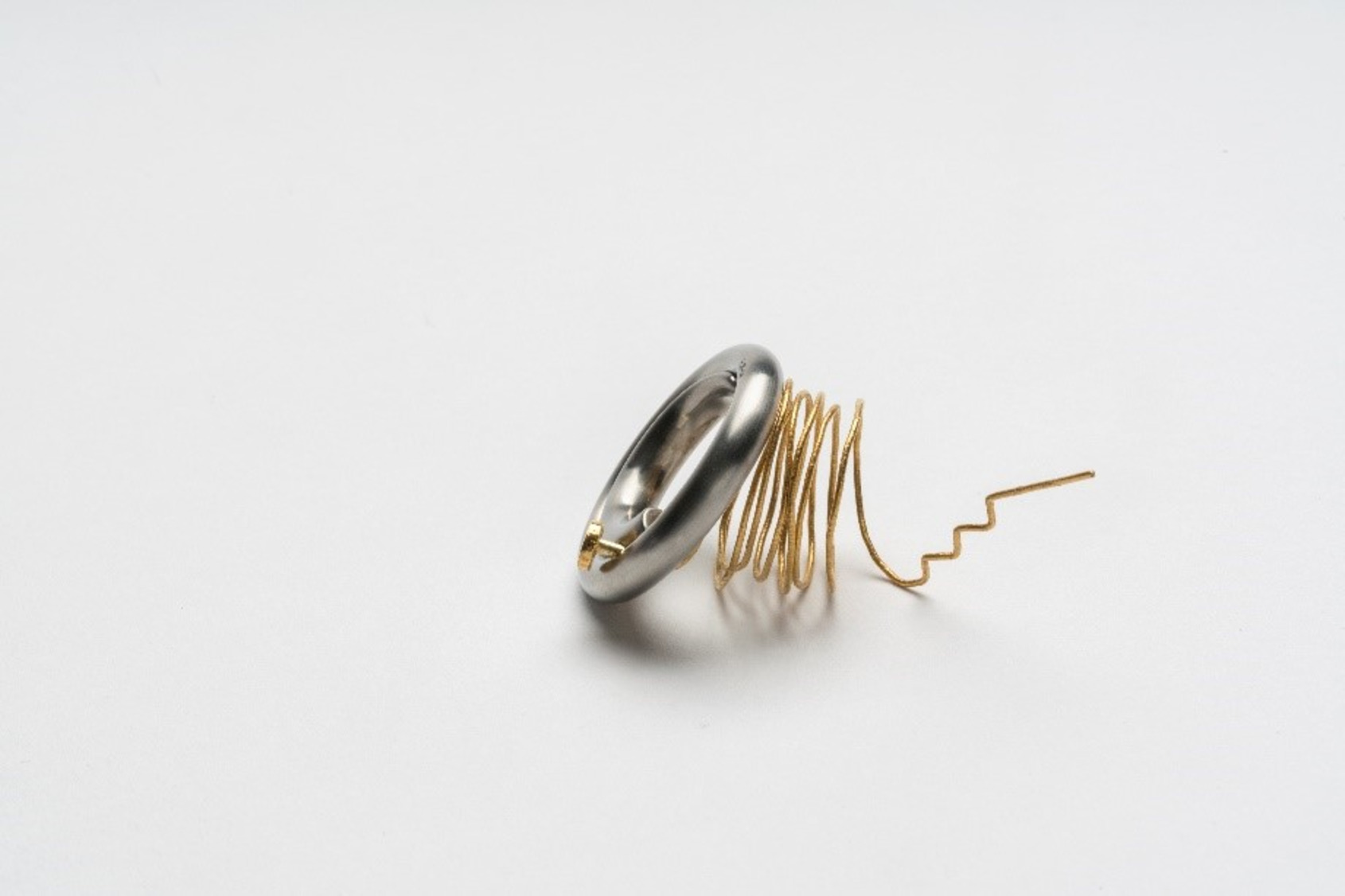
Ring, stainless steel, fine gold, 1983, 3x10cm; Schmuckmuseum Pforzheim, Germany by Franz Bette ©ALIEN ART